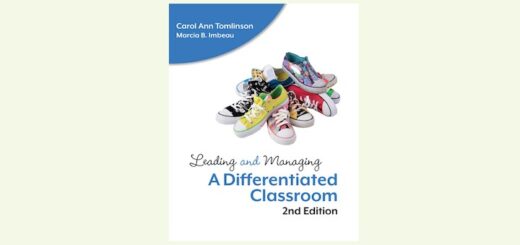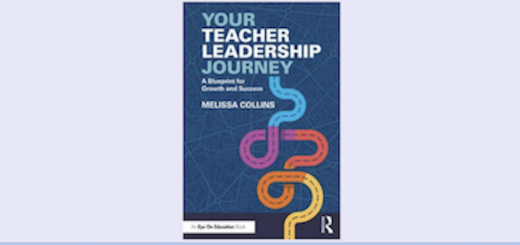Exploring the Joy of Math with Students in India
Best summer ever? It might have been for 160 gifted middle-level students who gathered from across India for three weeks of learning adventures that emphasized creative thinking and the joy of learning.
The ASSET Summer Programme (ASP) was held at the Manipal Institute of Technology in the university town of Manipal on India’s southwest coast. Course topics for the May event drew from diverse fields, including storytelling, emotional intelligence, entrepreneurship, architecture, biological modeling, and the process of scientific discovery.
The tagline for the program was “Best Summer Ever,” and I sensed that virtually every student in attendance would have described their experience in just that way.
My role was to teach a three-week mathematical thinking course to a group of 22 young teens. The experience was modeled after programs developed for gifted students at Duke University and was offered by Educational Initiatives, a company that also creates online assessment and learning tools for schools and families in India.
The Program
Each ASP course met 38 hours per week—6 hours during the day and 1 hour in the evening each weekday, plus 3 hours on Saturday morning. When students were not in the classroom, they were constantly involved in sports as well as creative and social activities designed and supervised by a team of Residential Coordinators. For most of the students, whose ages ranged from about 12 to 15, it was their first extended time away from home—which for most of them was a very long distance. I was constantly reminded of the size of India and its incredible diversity of language, culture, food, and geography.
The experience was intense for all involved, and though there were days when students entered my class appearing exhausted, their energy never failed when they began to delve into the mysteries of number, shape, dimension, and infinity.
The allotted 15-minute break each morning and afternoon was often spent continuing to work through the latest challenge. Students forged bonds with one another that I am sure will be long-lasting for many of them. For my part, I had the great pleasure of getting to know a group of people—students, instructors, teaching assistants, mentors, coordinators, and others—whose talent and passion inspired me on a daily basis.
The Course
A central purpose of our course, “Think Like a Mathematician,” as with all of the ASP courses, was to help students learn to think both independently and collaboratively. For mathematics in particular, this was a new experience for the young teens in my class.
As in the U.S., math is traditionally taught in India as a series of facts and procedures to be learned, practiced, and memorized. Most students told me that they were expected in their math classes to keep a notebook in which they copied each problem presented by the teacher followed by a predetermined step-by-step solution process.
Class sizes in their schools are often as large as 40 or 50 students, and opportunities are rare to differentiate for the needs of individual students. In spite of these past experiences, the students entered the ASP course excited and prepared to think about math in new ways.
It may go without saying that the students I was working with were not a typical cross-section of Indian children. In spite of efforts by Educational Initiatives to reach across culture and income barriers, a program of this nature is not accessible to most families. By and large, those who were able to attend belonged to families who were well-off and deeply engaged in their children’s academic success.

Students prepare to study dimension by playing the card game SET.
Growing up, these students had been offered experiences far beyond those of many Indian children. One such experience was the opportunity to learn English. Every student in my class spoke English fluently, though I came to realize that for a few students, my Western drawl (I’m from Colorado) was so unfamiliar that they struggled to understand me.
Each of my students also spoke Hindi (and they tried to teach me the rudiments of counting in that language!), and most of them spoke a third language native to their region of origin. I particularly enjoyed learning about differences in informal mathematical language. (For example, “8 into 8” means “8 times 8,” not “8 divided by 8”as I had thought.) And, of course, when I carelessly began talking about U.S. customary units of measurement such as gallons, I received a roomful of blank stares followed by a barrage of questions!
The Students
Having taught gifted students in the U.S. for over two decades, I was familiar with the intellectual and emotional intensity of many of these children. However, my experience in the ASP course was beyond anything I had encountered before.
Each day, I left class overwhelmed but exhilarated by the endless stream of questions and insights. It was often difficult to know what types of tasks would be challenging for them. The task with which I began the course (the grid of colored blocks shown here) often takes my students in the U.S. a few class days to figure out.
When my Indian students had it pegged within about a half-hour, I began to worry that I would never be able to keep up with them! However, there came cases later when I would offer problems that I meant to be quick warmups, and we spent hours sorting them out and learning from them.
On the whole, I discovered that students in India often learn algebra procedures earlier than students in the U.S., while the study of certain numerical ideas comes later. And as much as math educators in the U.S. tend to focus on practicing procedures, the emphasis on rote learning in India appeared to me to be even more entrenched and intense.
The Tasks
One of the most common activities in our class was to begin with a carefully selected mathematical image (often quite simple-looking) and to spend anywhere from about 15 minutes to an hour just looking at it and coming up with as many observations, predictions, and questions as we could. Just as with my students in the U.S., the Indian students consistently astonished me with their inventiveness and insight.
Though I always began with a clear intention about the direction of the conversation, the students never failed to surprised me with their ideas, and I usually felt that I was learning more than they were.
During the final two days of the course, students formed teams of two or three and carried out extensive, independent mathematical investigations and presented them to their classmates and other visitors. On the final day, they had an opportunity to share their presentations with parents. This dimension of the course was one of the most satisfying for all. The students were justifiably proud of their discoveries and the growth in their thinking.
Math for the Joy of It
One of the most wonderful parts of my time in India was having the opportunity to get to know the families, to learn more about their experiences, and to compare notes on the educational systems in our respective countries.
It was particularly interesting to realize how the pressures that many parents and students in India feel to pass national exams and prepare themselves for success in a career (usually medicine or engineering) color the entire educational experience.
I suspect that the ASSET Summer Programme was a rare opportunity for many of these young people to spend three weeks doing mathematics for the pure joy of it. It was certainly a joyful experience for me, and I hope to do it again if the opportunity arises.
Resources
Learn more about the grid of colored blocks that students explored during our first day of class.
How Open-Ended Math Problems Keep on Giving
This MiddleWeb post discusses the idea of using “noticing and wondering” with simple images.
This exploration about using shapes to define sequences of numbers was one of the students’ favorite projects.
Students learned about geometric series in this project about home loans.
Advanced Common Core Math Explorations
Many of our projects in the course came from these books.
_________________________

As founder of 5280 Math Education, he helps schools and districts implement research-based programming for gifted math students and offers tools and strategies for developing and nurturing adventurous math learners. Visit his store at MyEdExpert. And read more of his articles here at MiddleWeb.





































Dear Jerry,
Wordless to express my gratitude. Maths is always a decider of a student’s life in India, as regards their future, and as a parent and a professor, that always exists in me, or I should say, every Indian parent. Your article was really showing us a different spotlight on how maths can be approached. A nice learning experience, and I shared it with many.
Very interesting article. Both as a special educator who works with math teachers and as an international educator.
Are you an international educator too, or has this summer experience made you think of it?
By the way, I’m glad you brought up the idea of differentiation. It’s lacking in many math programs and that is just one of the reasons so many students have math phobia